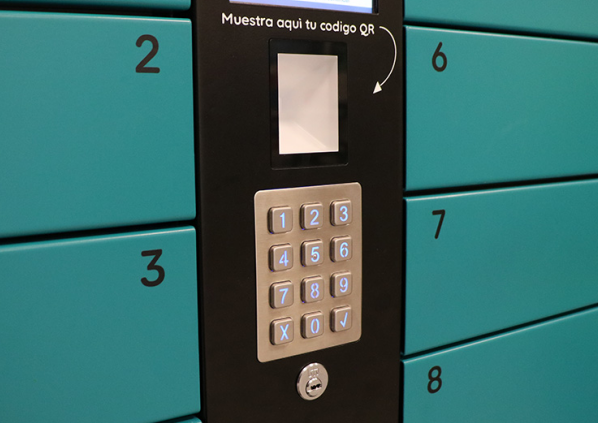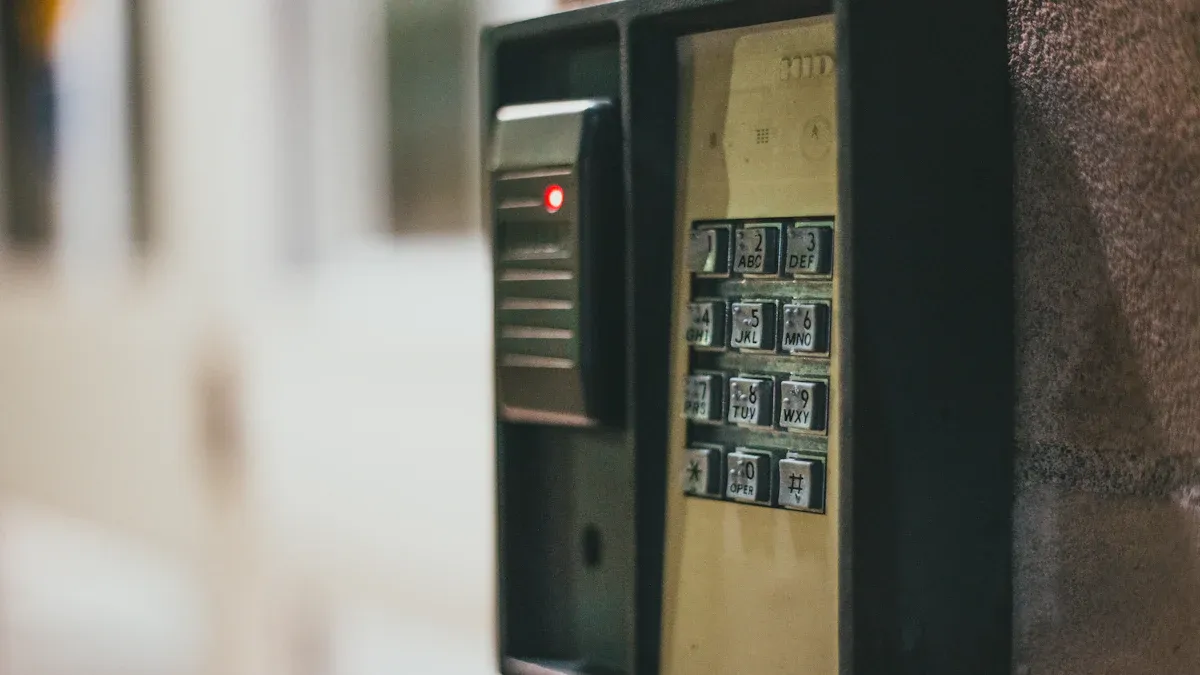
Selecting the right industrial metal keypad for communication equipment requires careful attention to several factors.
- Durability extends product life in harsh environments.
- Reliability ensures consistent operation.
- Usability supports efficient access.
- Compatibility and security protect sensitive systems and data.
Key Takeaways
- Choose industrial metal keypads made from strong materials like stainless steel to ensure long-lasting durability and resistance to vandalism and harsh weather.
- Look for keypads with high weatherproof and tamper-resistant ratings to protect communication systems from dust, water, and unauthorized access.
- Select keypads with clear layouts, backlighting, and customizable features to improve usability, safety, and seamless integration with various communication devices.
Durability and Security in Industrial Metal Keypad Design
Material Quality and Vandal Resistance
Material selection plays a critical role in the durability and vandal resistance of an industrial metal keypad. Manufacturers often choose robust metals to withstand harsh use and potential abuse in public or industrial settings. The following table highlights the most common materials and their properties:
| Material Type | Specific Materials | Key Properties and Applications |
|---|---|---|
| Metals | Stainless steel, zinc, aluminum, aluminum alloy, die-cast zinc, chrome-plated zinc alloy | High robustness, corrosion resistance, vandal resistance, and waterproof ratings (IP65/IP66); ideal for harsh environments |
| Plastic | Silicone, polycarbonate, polystyrene | Used for some components; less effective for vandal resistance |
| Rubber | Silicone rubber | Adds conductive and protective qualities to keypad buttons |
Stainless steel keypads stand out for their ruggedness and ability to resist vandalism. Chrome-plated zinc alloy and die-cast zinc also provide strong protection against corrosion and aging. Manufacturers often use laser engraving or etching for key labeling, ensuring that markings remain visible and intact even after years of heavy use. In high-traffic environments, such as kiosks and ATMs, an industrial metal keypad can exceed 10 million key operations, with a mean time between failures of over 50,000 hours. This level of durability ensures reliable performance in demanding applications.
Tip: Choosing a keypad with high-quality metal construction and durable key labeling extends the lifespan and reduces maintenance costs.
Weatherproofing and Environmental Protection
Outdoor and industrial environments expose communication panels to dust, water, chemicals, and extreme temperatures. To address these challenges, manufacturers design industrial metal keypads to meet strict weatherproofing standards. Common industry standards include:
- IP (Ingress Protection) codes: IP54, IP65, IP66, IP67, IP68, IP69K (protection against dust, water, and immersion)
- IK ratings: IK07, IK08 (impact resistance)
- MIL-STD: MIL-STD 810F, 810G, 461G (environmental durability and ruggedness)
- NEMA enclosure standards: NEMA 4, NEMA 4X (protection against water and corrosion)
The table below compares typical NEMA and IP ratings for industrial keypads:
| NEMA Rating | Equivalent IP Rating | Protection Details |
|---|---|---|
| NEMA 4 | IP66 | Dust and water ingress, hose-directed water, splashing, condensation; suitable for indoor/outdoor use |
| NEMA 4X | IP66 | Same as NEMA 4, plus corrosion resistance |
| NEMA 6 | IP67 | Hose-directed water, ice formation, temporary submersion |
| NEMA 6P | IP68 | Hose-directed water, ice, prolonged submersion |
Stainless steel, silicone rubber, and epoxy resin are common materials used to achieve these ratings. Features such as waterproof seals, dust-proof enclosures, and shock-resistant designs ensure that the industrial metal keypad continues to function reliably, even in the harshest conditions.
Tamper Resistance and Data Security
Security is a top priority for any communication system. Industrial metal keypads incorporate several features to prevent tampering and protect sensitive data:
- Tamper switches detect unauthorized opening of the keypad unit, triggering immediate alerts.
- Some models meet EN50131 Alarm standards, providing recognized security compliance.
- RFID tag readers activate only when a person is detected within a short range, reducing the risk of unauthorized access.
- Programmable buzzers and multi-color LED indicators offer audible and visual alarms during tampering attempts.
- Robust mounting options, such as screws or industrial adhesives, prevent easy removal or theft.
Physical keypads also provide inherent security advantages over touchscreens. Tactile feedback and physical separation between keys reduce input errors and make unauthorized access more difficult. In addition, the physical design of an industrial metal keypad helps prevent accidental or malicious inputs, supporting secure operation in public and industrial environments.
Note: Security features such as tamper detection, alarm integration, and robust mounting are essential for protecting both the device and the data it handles.
Usability, Integration, and Performance of Industrial Metal Keypads

Key Layout, Size, and Accessibility
A well-designed industrial metal keypad features a logical key layout and appropriate key size. Large, clearly labeled keys help users avoid mistakes, especially when wearing gloves or working in low-light conditions. Accessibility improves when manufacturers use consistent terminology and provide immediate feedback after each input. Users often complain about inconsistent controls, confusing menu language, and lack of undo options. Addressing these issues with intuitive layouts and responsive feedback reduces frustration and increases efficiency.
Backlighting and Visibility
Visibility remains critical in industrial and outdoor environments. Manufacturers use backlighting technologies such as LEDs, fiber optics, and light guides to enhance key visibility. Multicolor backlighting communicates machine status—red for off, green for on, orange for idle, and flashing red for problems. This visual feedback guides users and improves safety. Low-power LEDs with printed light guides provide energy-efficient illumination, which extends battery life in portable or remote devices.
Electrical Interface Standards and Mounting Options
Industrial metal keypads support a range of electrical interface standards to ensure compatibility with various communication panels. Mounting options influence both installation and maintenance:
- Panel-mount keypads use rugged materials and sealing methods like potting and gasket sealing for waterproof and dustproof protection.
- Flush fitting and low-profile designs simplify cleaning and reduce contamination.
- Wall-mounted keypads offer similar protection but may differ in installation complexity.
Robust construction and effective sealing reduce maintenance needs by protecting internal components from harsh environments.
Customization and Compatibility with Communication Systems
Manufacturers offer extensive customization to ensure compatibility with diverse communication protocols. The table below highlights common options:
| Customization Aspect | Details |
|---|---|
| Keypad Types | Tactile and membrane keypads with 16, 18, or 24 programmable keys |
| Programmable Keys | Assign any function to any key location; supports global and screen-dependent functions |
| Key Legend Inserts | Customizable inserts with free legend generator software |
| Configuration Software | OITware-200 and STEPware-100 for setup and communication configuration |
| Supported Protocols | Compatible with over 100 brands of PLCs, motion controllers, and supports ASCII/Modbus |
| Certifications | UL, CE, C1D2, RoHS, BABA certified for industrial use |
Manufacturers also use virtualization and open protocols to bridge legacy and modern systems, ensuring the industrial metal keypad integrates seamlessly across platforms.
Industry experts highlight several critical qualities for an industrial metal keypad in communication systems:
- Ruggedness and IP66 protection for harsh environments
- Reliable operation with illuminated keys
- Adaptability to wide temperature ranges
- High audio quality for noisy areas
- Easy maintenance and proven use in demanding sectors
Durability, security, usability, and seamless integration ensure long-term reliability. These features support consistent performance and safety in challenging industrial settings.
FAQ
What makes an industrial keypad different from a standard keypad?
Industrial keypads use stronger materials, weatherproof seals, and tamper-resistant features. These qualities help them perform reliably in harsh or public environments.
Can industrial keypads work in extreme temperatures?
Manufacturers design industrial keypads to operate in wide temperature ranges. Many models function from -40°F to 158°F, making them suitable for outdoor and industrial use.
How do users clean and maintain industrial keypads?
Users can clean keypads with a damp cloth and mild detergent. Manufacturers recommend regular inspections to check for damage or wear, ensuring long-term reliability.

